SA’s algal bloom crisis deepening as marine expert calls masses of dead sea dragons ‘worst impact I’ve seen’
A dying shark has stunned fishos by swimming in tight circles for hours in a desperate bid to breathe at a busy marina as the horror off our coast worsens. Watch the video.
SA News
Don't miss out on the headlines from SA News. Followed categories will be added to My News.
A dying shark has stunned fishos by swimming in tight circles for hours in a desperate bid to breathe at a popular marina — as a toxic algae bloom turns SA waters into a death zone.
The bizarre sight unfolded at Wirrina Marina, where a six-foot juvenile shark was spotted looping the same small patch of shallow water, seemingly struggling to breath on Tuesday morning.
“I thought it was a dolphin at first,” said Southern Fishing Charters skipper Jarrod Glasister. “Then I saw the teeth and realised it was a shark — a very sick shark.”
“He looked dull, swimming slow and was almost belly-up.”
He’s convinced the shark is the latest victim of karenia mikimotoi — a suffocating algae bloom dubbed the worst marine event in state history.
With oxygen levels crashing, marine life has been fleeing inshore and dying in droves.
Dead leafy sea dragons have washed ashore, deranged stingrays have attacked researchers and sharks are haemorrhaging as they flap in the shallows.
“It’s like this shark found a little pocket of clean water in the breakwater, and he’s clinging to it,” Mr Glasister said.
“It’s very, very bizarre. I’ve never seen anything like this before.
“He’s just doing the same lap again and again. I’ve watched him go round for the last two hours.”
But hope is fading.
“We don’t reckon he’s going to make it,” the skipper added.
This crisis is also hammering local fishing tourism.
Mr Glasister’s crew is now burning through more fuel and battling rougher seas, forced to travel three times further than usual just to avoid the bloom.
“We’re losing days, spending more, and working longer. It’s a bloody mess.”
Disturbing vision of a recreational fisher cruising through the algae, off the coast of Victor Harbor, has further illustrated how widespread the crisis is.
In the footage, the boater drives through a sea of toxic sludge near the Bluff in Encounter Bay after a days fishing.


It comes after Environment Minister Susan Close told The Advertiser higher sea temperatures – 2.5 degrees warmer than usual – combined with calm conditions and small swell had created the perfect storm for the algae to spread.
Dr Close declared the bloom “the most serious natural marine challenge we’ve had”, listing a disturbing range of impacts on marine life.
“We’ve seen some of the fish wash up, including the sharks, with a real pinkish tinge to them, that is a haemorrhaging that occurs underneath the surface of the skin.
“It gets into their gills and poisons them and it seems to cause this haemorrhaging.
“Overnight the algae sucks up oxygen from the ocean and anything that’s underneath it becomes oxygen starved.
“We are seeing a lot of marine life dying and it’s disturbing and in fact distressing for people to see that.”
The algae bloom is expected to worsen over the next week, with the Bureau of Meteorology forecasting little to no rain or wind across Adelaide this week.
The microorganism has grown to the size of Kangaroo Island, spreading along parts of the Fleurieu Peninsula and the southern coast of the Yorke Peninsula.
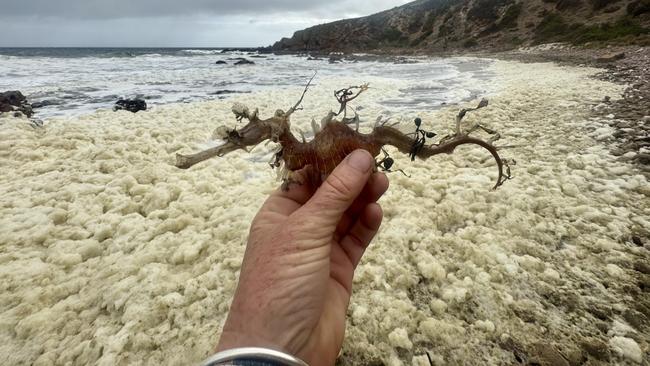
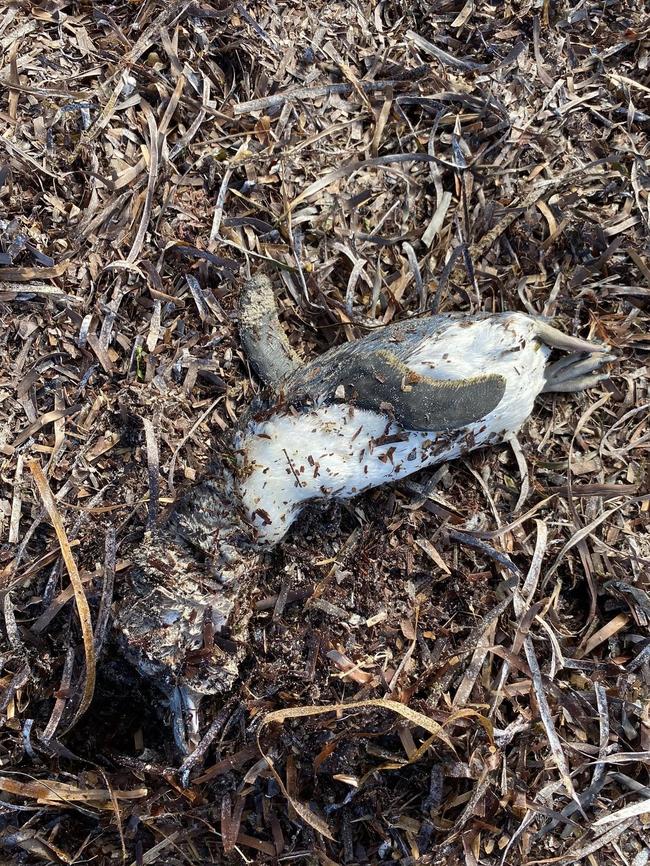
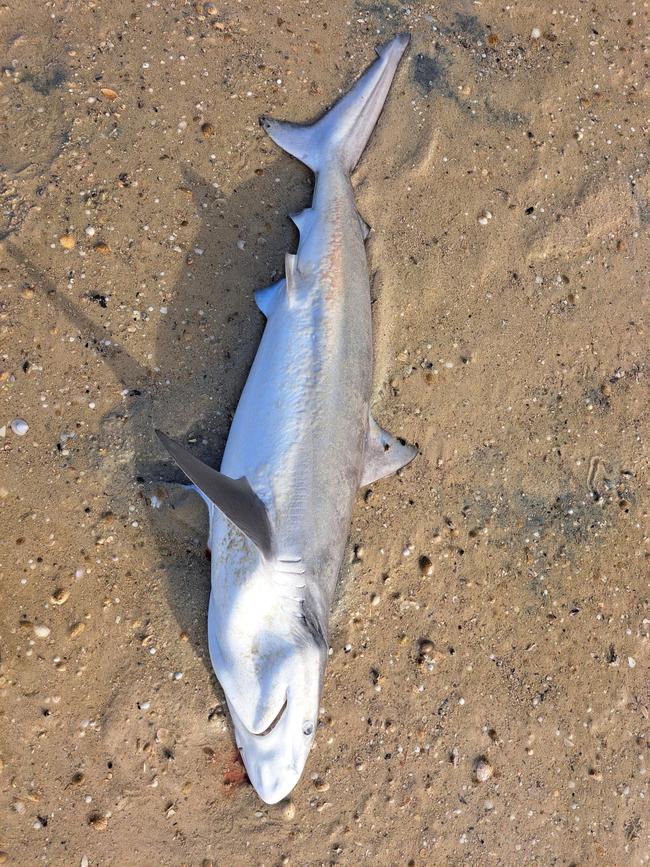

Despite the bloom killing marine life across the state, it is not toxic if consumed by a human.
Dr Close, also the Deputy Premier, was hopeful the algae would be broken up by strong winds by the end of the month.
“It’s also incredibly challenging to be dealing with a natural event that we can’t control, the lack of power that we have over ending this bloom is very distressing for people,” she said.
“This has been a really distressing and challenging experience, I’m hopeful it will come to the end in the next few weeks.”
Renowned marine conservationist Mike Bossley said more than 50 protected sea dragons found washed up along a stretch of Foul Bay, on the south coast of the Yorke Peninsula, on Sunday was the worst impact of the bloom he has seen to date.
“I’ve been walking beaches for years and years and years, and I might see one (weedy sea dragon) every five years, but to suddenly have (52) of them washed up on one beach at one time, it’s just phenomenal,” Mr Bossley said.
“It’s alarming in both the short term, in that lots and lots of more animals are dying than we would normally see dying, but also in the longer term, we don’t know what the economic and environmental impact of the bloom’s going to be.
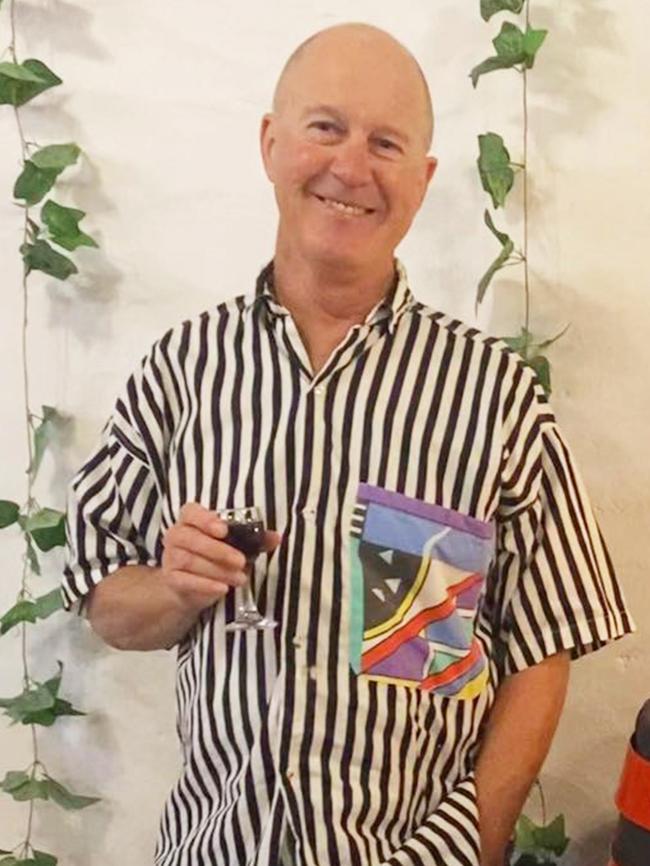
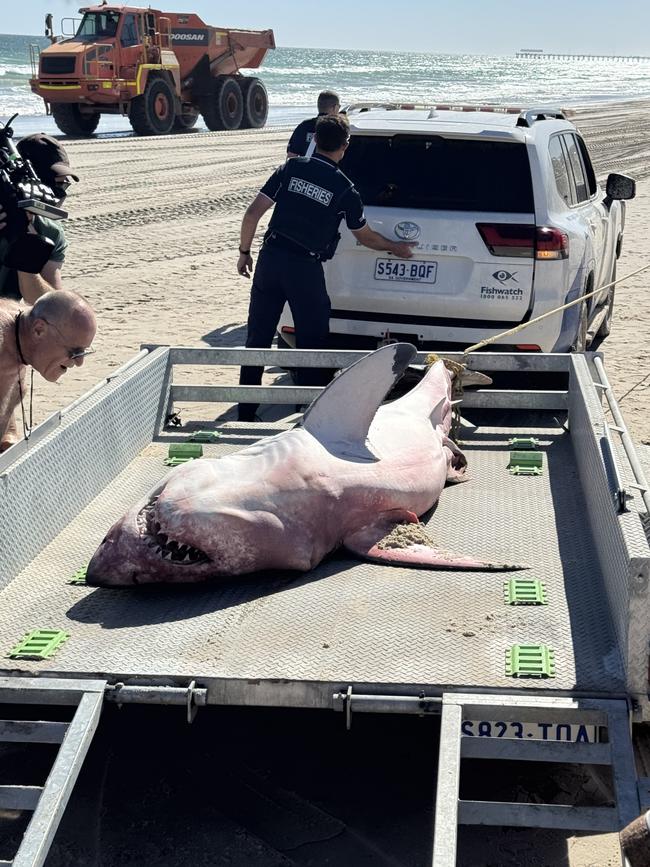
“It could change what species are occurring in the Gulf and what numbers they’re occurring in. It could have, could have an impact on their recreational and commercial fishing activities in the Gulf.
“And if indeed, as seems almost certain, this whole bloom is as a consequence of climate change, then that’s extremely concerning for the future of us here and the planet in general.”
Since February, millions of fish and sea creatures across more than 200 species have died because of the phenomenon, which was described by not-for-profit OzFish SA as a “toxic blanket” smothering marine life.
Roanna Horbelt, the owner and operator of Kangaroo Island-based research and touring company RAD KI, said she had spoken to 30 or 40 people who had all “picked up dozens” of leafy sea dragons at the island.
She said before the algal bloom, she had only ever found one leafy sea dragon on the beach.
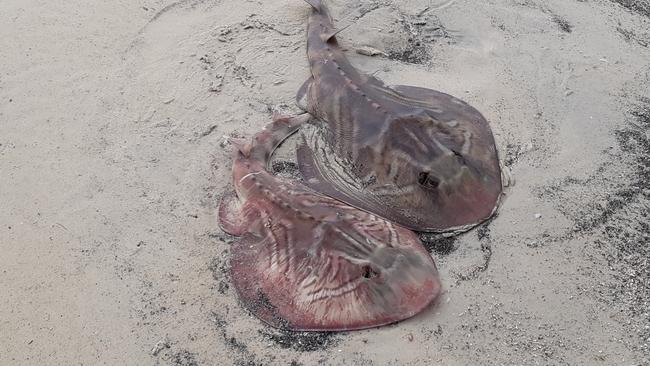

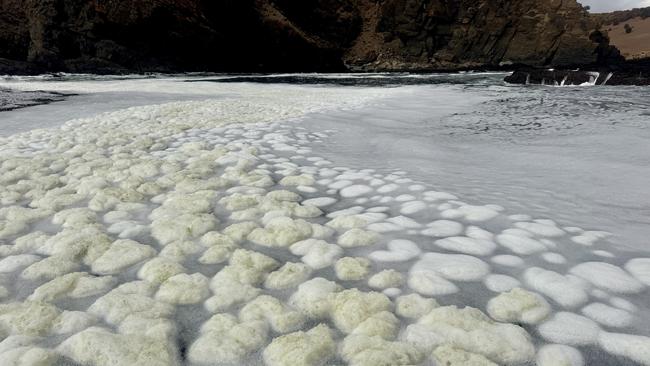
On Sunday, Ms Horbelt took photographs showing a mass of algae blobs covering the sea at Cape Cassini.
She said she observed the same shocking sight all the way up to Snelling Beach, about 37km away.
“We’ve actually been monitoring the water temperatures all year this year, and they’ve been an average of at least three degrees higher than any other year,” Ms Horbelt said.
“It’s like a bushfire in the oceans; it’s wiping out everything.
“It’s tough. It’s really, really bad.”
In a second community update on the crisis within a week, Kangaroo Island Council Mayor Michael Pengilly last week said local fishers were “being directly impacted and unable to operate in some areas” on the island.
Kangaroo deaths ‘toxic grass’, not algae
An investigation has cleared South Australia’s toxic algal bloom of blame for the death of 50 kangaroos, instead pinning toxic grass as the “likely” culprit.
The state government launched the investigation after authorities were forced to euthanise 50 sick kangaroos at Tunkalilla on the Fleurieu Peninsula, near to the algae outbreak.
A spokesman for the Department for Environment and Water said although water samples showed the presence of the microalgae Karenia mikimotoi – the name of the toxic algae affecting the state – disease investigation by PIRSA showed the deaths and neurological symptoms were “likely caused by Phalaris grass toxicity”.
“The dry conditions, lack of palatable food and high densities of kangaroos may have contributed to the poor condition of the animals,” he said.

“The Department of Primary Industries and Regions Animal Biosecurity Team attended the site, collecting samples and carcasses for testing.
“National Parks and Wildlife Service rangers visited the site in mid-April and advised that the situation had improved and the kangaroos remaining at the site looked healthy.”
Speaking in parliament, Primary Industries Minister Clare Scriven said a mob of about 200 kangaroos had been impacted, “with approximately half the mob showing mild to severe neurological signs”.
“The animal biosecurity team euthanised approximately 50 animals, and a further 30 were impacted but were not euthanised,” she said.
DEW said it will continue to monitor the situation.




